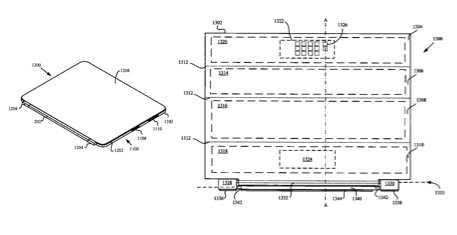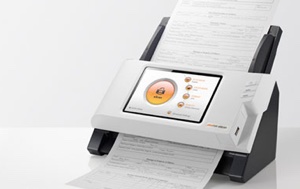Apple has been granted a patent (8138869) for the iPad Smart Cover, a front cover for the tablet that snaps into space with magnetic hinges and which “wakes up, stands up and brightens up your iPad.”
In the patent, a magnetic attachment mechanism and method is described. The magnetic attachment mechanism can be used to releasably attach at least two objects together in a preferred configuration without fasteners and without external intervention. The magnetic attachment mechanism can be used to releasably attach an accessory device to an electronic device. The accessory device can be used to augment the functionality of usefulness of the electronic device. The inventors are Andrew Lauder, Matthew D. Rohrbach, Daniel J. Coster, Christopher J. Stringer, Florence W. Ow, Jiang Ai, Jonathan P. Ive, Elvis M. Kibiti, John P. Ternus and Sean D. Lubner.
Here’s Apple’s summary of the invention: “An accessory unit includes at least an accessory body and a magnetic assembly pivotally connected to the accessory body. The magnetic assembly includes at least a first plurality of magnetic elements arranged adjacent one another in a first relative size order along a first line and arranged according to a first polarity pattern of alternating magnetic polarities, and a second plurality of magnetic elements arranged adjacent to one another in a second relative size order along the first line and according to a second polarity pattern of alternating magnetic polarities.
“A magnetic attachment method suitable for use with an accessory unit can be carried out by providing a magnetic assembly where the magnetic assembly includes at least a first plurality of magnetic elements arranged adjacent one another in a first relative size order along a first line and arranged according to a first polarity pattern of alternating magnetic polarities and a second plurality of magnetic elements arranged adjacent to one another in a second relative size order along the first line and according to a second polarity pattern of alternating magnetic polarities, wherein the first and second plurality of magnetic elements cooperate to form a first magnetic sequence.
“In the described embodiment, the method can be carried out by placing the sequenced magnetic assembly in proximity to a host unit, causing the creation of a first magnetic surface by the host unit, the first magnetic surface being suitable for magnetic attachment, and magnetically attaching the accessory unit and the host unit at an engagement surface corresponding to the magnetic surface.
“An accessory unit in another embodiment includes at least an accessory body having a first magnetic element and a second magnetic element pivotally connected to the accessory body, wherein the second magnetic element magnetically attaches the accessory unit pivotally to a first portion of a host unit and wherein the first magnetic element cooperates with the second magnetic element to magnetically attach the accessory body to a second portion of the host unit, wherein the first and second magnetic elements are independent of each other.”





